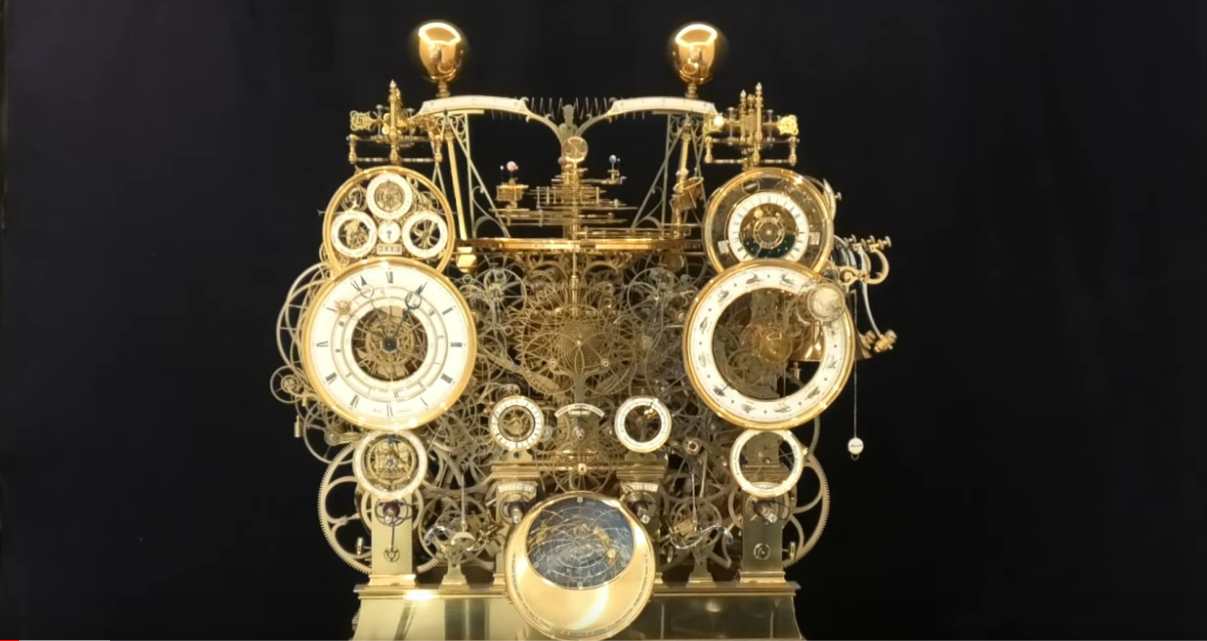You might never know it, but this thing weighs right around 1,200 pounds.
The video below shows the only recently finished masterpiece in operation.

It’s clock builder Mark Frank’s labor of love that includes 52 “complications,” including a 400-year perpetual calendar, tide clock, solar and lunar eclipse prediction, a planisphere to show the constellations, and even a thermometer. The clock also sports both a tellurion to keep track of the Sun-Earth-Moon system and a full orrery out to the orbit of Saturn, including all the major moons. The video below shows the only recently finished masterpiece in operation.
Mark Frank takes clock building to a whole other level.
You can catch up with Mark on his website (where there are other amazing clock builds) and over on his Youtube channel.
For those of you who may not know, an Astronomical clock is a clock with special mechanisms and dials to display astronomical information, such as the relative positions of the Sun, Moon, zodiacal constellations, and sometimes major planets.
According to Wikipedia, The Antikythera mechanism is the oldest known analog computer and a precursor to astronomical clocks. A complex arrangement of multiple gears and gear trains could perform functions such as determining the position of the sun, moon and planets, predict eclipses and other astronomical phenomena and tracking the dates of Olympic Games. Research in 2011 and 2012 led an expert group of researchers to posit that European astronomical clocks are descended from the technology of the Antikythera mechanism.






